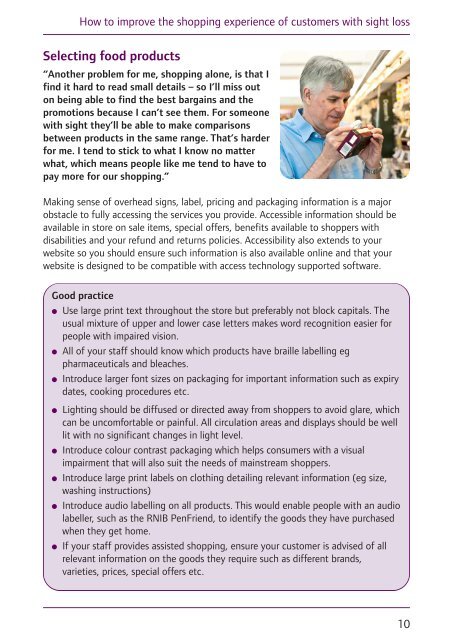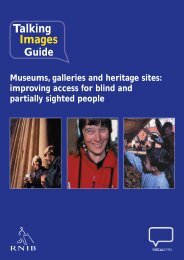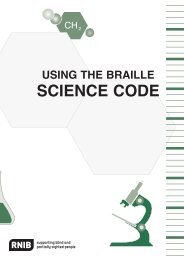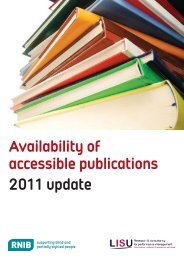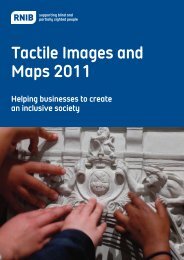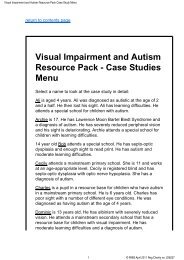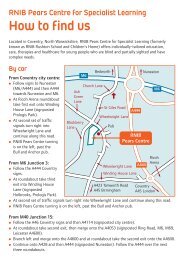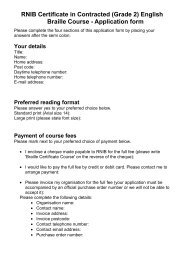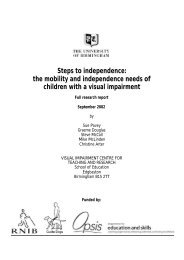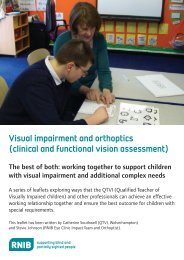The retail experience - RNIB
The retail experience - RNIB
The retail experience - RNIB
Create successful ePaper yourself
Turn your PDF publications into a flip-book with our unique Google optimized e-Paper software.
How to improve the shopping <strong>experience</strong> of customers with sight loss<br />
Selecting food products<br />
“Another problem for me, shopping alone, is that I<br />
find it hard to read small details – so I’ll miss out<br />
on being able to find the best bargains and the<br />
promotions because I can’t see them. For someone<br />
with sight they’ll be able to make comparisons<br />
between products in the same range. That’s harder<br />
for me. I tend to stick to what I know no matter<br />
what, which means people like me tend to have to<br />
pay more for our shopping.”<br />
Making sense of overhead signs, label, pricing and packaging information is a major<br />
obstacle to fully accessing the services you provide. Accessible information should be<br />
available in store on sale items, special offers, benefits available to shoppers with<br />
disabilities and your refund and returns policies. Accessibility also extends to your<br />
website so you should ensure such information is also available online and that your<br />
website is designed to be compatible with access technology supported software.<br />
Good practice<br />
l Use large print text throughout the store but preferably not block capitals. <strong>The</strong><br />
usual mixture of upper and lower case letters makes word recognition easier for<br />
people with impaired vision.<br />
l All of your staff should know which products have braille labelling eg<br />
pharmaceuticals and bleaches.<br />
l Introduce larger font sizes on packaging for important information such as expiry<br />
dates, cooking procedures etc.<br />
l<br />
l<br />
l<br />
l<br />
l<br />
Lighting should be diffused or directed away from shoppers to avoid glare, which<br />
can be uncomfortable or painful. All circulation areas and displays should be well<br />
lit with no significant changes in light level.<br />
Introduce colour contrast packaging which helps consumers with a visual<br />
impairment that will also suit the needs of mainstream shoppers.<br />
Introduce large print labels on clothing detailing relevant information (eg size,<br />
washing instructions)<br />
Introduce audio labelling on all products. This would enable people with an audio<br />
labeller, such as the <strong>RNIB</strong> PenFriend, to identify the goods they have purchased<br />
when they get home.<br />
If your staff provides assisted shopping, ensure your customer is advised of all<br />
relevant information on the goods they require such as different brands,<br />
varieties, prices, special offers etc.<br />
10


